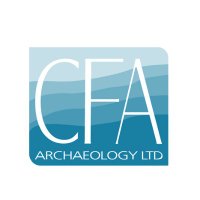
🏺 🔍We're delving into the fascinating realm of archaeological conservation with this Early Bronze Age beaker, #FoundInTheGround in Salisbury by our archaeologists!


The wonders of seaweed! 🌿✨
These samples of kelp glass #FoundInTheGround by our archaeologists illuminate the kelp industry's influence on glassmaking during the 17th-18th c.!
Why kelp? It was used to reduce the melting temperature during production!
Source: David Dungworth.


Prepare to be “deerlighted” by this lovely bit of worked antler #FoundInTheGround by our archaeologists in Nottinghamshire! 🦌
This is the very base of a shed red deer antler. Deer annually shed their antlers in Spring, and then the antler regrows.


Interested in the posterior pampering habits of 18th c. Bristolians? This bone nozzle, found in a cesspit, is from an enema syringe used to inject water (or wine or milk) into a patient's rectum to treat medical ailments.
Who said archaeology isn't glamorous?
#FoundInTheGround


This is the tip of a small early 18th-century earthenware sugar mould cone #FoundInTheGround by our archaeologists in Bristol.
A challenging physical reminder of the city’s role in the transatlantic slave trade during the late 17th-18th c., and those who experienced it.


Found in a Bristol cellar destroyed in the 1940 Blitz, this #FoundInTheGround artefact is a 1930s Brooke & Prudencio ginger beer bottle!
Made from hand-thrown stoneware with a distinctive honey & cream glaze popular in the 20th century.
#Archaeology


Our archaeologists have #FoundInTheGround this “Cornish” crucible made by the Morgan Crucible Co. of Battersea, London! 🌆
This crucible was found on the site of a Victorian non-ferrous (materials that are not iron-based) smelting works.


This birdfeeder was #FoundInTheGround by our archaeologists in Bristol, in a dump of late 18th c. household refuse! 🕵 🦜
By the 18th c., tropical parrots were being imported to Europe, where their ability to mimic sounds provided both delight and irritation to their owners! 🎶



This Codd bottle was #FoundInTheGround by our archaeologists in Oxfordshire! Its top has been smashed off, perhaps to retrieve the marble inside. 🤔
Before the introduction of metal bottle caps, Codd bottles were widely used to store carbonated drinks to keep them fizzy! 🫧


#FindsFriday ! We’ve got two #IronAge perforated stone discs, each of a different size and manufacture. Discs like this were likely part of a larger tool and may have served as weights for something like a pump drill.
#FridayFind #FoundInTheGround #Prehistoric


Happy #FindsFriday everyone! Today we’ve got one freshly #FoundInTheGround - a lovely rim sherd of #Roman pottery recovered from a site in #NorthYorkshire 😍
#Roman Twitter #Roman Archaeology


Whether or not I’m interested in antiquity teeth, I really like the strap line #FoundInTheGround . Says it all. Somehow so much better than ‘unearthed’, ‘Discovered’ etc etc
